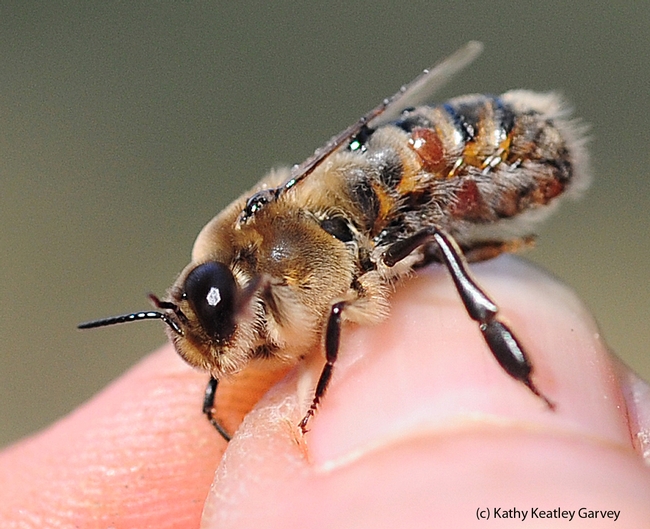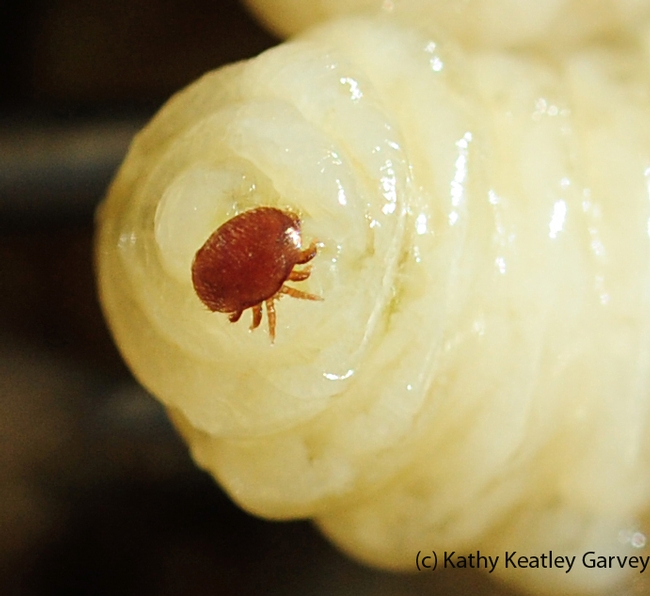Varroa mites, those pesky little parasites that suck the blood out of honey bees and spread multiple viruses, are now found throughout the world, except in Australia.
Scientists blame these parasites as one of the causes of colony collapse disorder (CCD), characterized by adult bees abandoning the hive and leaving behind the queen, brood and food stores. They attribute CCD to a multitude of factors, including pests, pesticides, parasites, diseases, viruses, malnutrition and stress. Thus, varroa mites are a key factor in the declining honey bee population.
Today's honey bees are ill-equipped to rid their hives of a varroa mite infestation. Indeed, beekeepers consider the varroa mite (scientific name Varroa destructor) as Public Enemy No. 1.
And that's one of the reasons why we like bee breeder-geneticist Susan Cobey's efforts to increase the genetic diversity in our domestic honey bee gene pool.
Cobey, who has a dual appointment at the University of California, Davis and Washington State University, is directing a stock improvement program which aims to do just that.
"Increasing the overall genetic diversity of honey bees will lead to healthier and hardier bees that can better fight off parasites, pathogens and pests," she says.
"We have collected and imported honey bee semen (germplasm) from their original European homeland to inseminate select domestic queens produced by the California bee breeders," Cobey told us. These California breeders supply queen bees and package bees nationwide. Honey bees, as Cobey points out, "provide the essential pollination for our crops, especially in California, "the breadbasket" of our country and our world.
Cobey and her team have also re-introduced the subspecies, Apis mellifera caucasica, a dark race of bee known for its collection and use of propolis, self-medicating plant resins.
What does a mite look like? Check out the mite-infested drone below. A boy bee's only duty is to gather in the drone congregation area and mate with the queen during her maiden flight, but that won't happen with this one. No thanks to the parasitic mites, he has a weakened immune system, crippling his ability to fly.
What will happen to him? His sisters will kick him out of the hive and he will die.
Attached Images:

